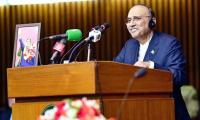LAHORE: Ever-rising edible oil and oilseed prices, reflecting 119.84 percent jump in the world markets and rupee-dollar parity widening by 23.25 percent in the last three years have become a double whammy for the masses, particularly the poorest of the poor.
In spite of rising oilseed prices, the failure in encouraging farmers to increase local production has sent the edible oils’ prices through the roof. Owing to both internal and external factors, a litre of edible oil now costs about Rs509/litre (May 13, 2022 price) against average price of Rs225/litre in 2019. This spiraling trend has resulted in a 126.22 percent jump in the price of edible oil in the last about three years.
Being the essential item in the food basket, oilseeds and edible oils are the single largest food imports into a country like Pakistan, constituting approximately 80-90 percent of total use.
Local edible oil demand is met through both crushing of locally produced and imported oilseeds and import of edible oil in bulk. Despite being a major agrarian economy, heavy reliance on imports for meeting edible oil requirements have been one of the major reasons for soaring cooking oil prices which increases inflationary pressure on poor, thereby putting food security of the country at stake.
The spike in food import bill further strains forex reserves and this trend is largely going on unnoticed. In the year 2021, total edible oil and oil seed import bill skyrocketed to a whopping $5.45 billion against $2.63 billion recorded three years back in 2019, showing a staggering hike in import cost of edible oil and oilseeds by 107.22 percent.
During 2019, Pakistan imported 2.69 million tonnes of soybean and canola oilseed, valued at $1.10 billion. In addition to this, 2.55 million tonnes of palm oil and other byproducts were also imported during the same year, costing another $1.53 billion in the same year.
The import of oilseed swelled to 3.33 million tonnes in the 2021 calendar year with a price tag of $1.98 billion. Similarly, palm oil and other derivatives' imports during the same year ballooned to 2.98 million tonnes, costing $3.74 billion.
The ordeal of consumers because of the backbreaking inflation seems dying hard as prices are yet to peak, said market insiders. In the last couple of months of political instability alone, rupee has devalued to Rs193.70 or by 8.82 percent against dollar, which may further inflate the edible oil price by about Rs25/litre in the retail market in a fortnight or so.
The impact of recent three upward revisions in edible oil’s retail price is stated to be in addition to such cost escalation, according to market insiders.
Ban imposed by Indonesia on palm oil and other byproducts’ export, Ukraine-Russia war, and prolonged heatwave may also negatively contribute to the cost of edible oil, further straining the livelihoods of people in this part of the word.
In order to tame cooking oil prices, Pakistan needs to convert this crisis into an opportunity by incentivising cultivation of edible oil. Neighbouring India is doing the same and has succeeded in increasing domestic production.
It is a sheer lack of good governance that no specialised department exists in the public sector both at federal as well as provincial levels for the systematic promotion of oilseed crops in the country.
With Pakistan Oilseed Development Board’s (PODB) scope remaining drastically limited at national level and non-establishment of similar institutions at provincial levels following passage of 18th Amendment, all development work on edible oil sector came to a standstill.
The capacity issue of provinces is yet to be addressed, despite receiving billions of rupees every year from the Center. The lack of will, broader vision, and proactive approach cost the whole nation dearly with virtually no work being done to enhance domestic oilseed production.
Other than PODB’s so-called ‘achievement’ of increasing acreage of sunflowers, no other initiative has been introduced for this food sector so far. Consequently, no one took the responsibility of coordination and policy formulation for oilseed development and with virtually no result-oriented research on oilseed crops, farmers found no charm in planting these crops.
Owing to such dismal ‘performance’, no tangible work could be done on introduction of soybean cultivation, which requires financial incentive to make it a profitable option for potential growers. Despite having promising prospects, intercropping of maize and soybean is still a nonstarter. To make things worse, mismanagement is rife in agriculture departments and research institutions in the absence of real technocrats at key positions.
In addition to increasing local production of oilseed, which will have far-reaching impact in this regard, the government should also consider reducing tax rate on imports to provide short-term relief.
As far as the tax regime for the edible oil sector is concerned, duties on import of oilseed have been structured to encourage domestic value-addition through relatively reduced tariffs.
However, overall taxes on import stage are too high, totaling over 30 percent of the value. If the government wants to provide relief to consumers, the tax ratio should be rationalised in a way that about 15 to 20 percent reduction in prices could be made possible. Last but not the least, a continuous decline in cotton production also led to squeezing seed-cotton availability for oil extraction, limiting supply of relatively cheap locally produced oilseed.
This year, a jump of 10 to 15 percent is however likely in the cotton production, which may optimistically translate into lowering the cost of blended cooking oil to some extent.
An image from the launch event of the Pakistan Pavilion for Expo 2025 Osaka's revelation in Kobe. —...
Federal Reserve Chair Jerome Powell. — AFP/File ARLINGTON: The recent tariffs introduced by President Donald...
Trucks loaded with shipping containers pass over Donghai Bridge to exit Yangshan Port outside of Shanghai, China,...
In this picture taken on July 20, 2023, a worker operates a machine preparing fabric at a textile mill in Lahore. —...
A hand is seen on a laptop with binary code displayed on the screen in front of Russian flag in this picture...
Traders work on the New York Stock Exchange floor in New York City, US on June 14, 2022. — ReutersLONDON/SINGAPORE:...







